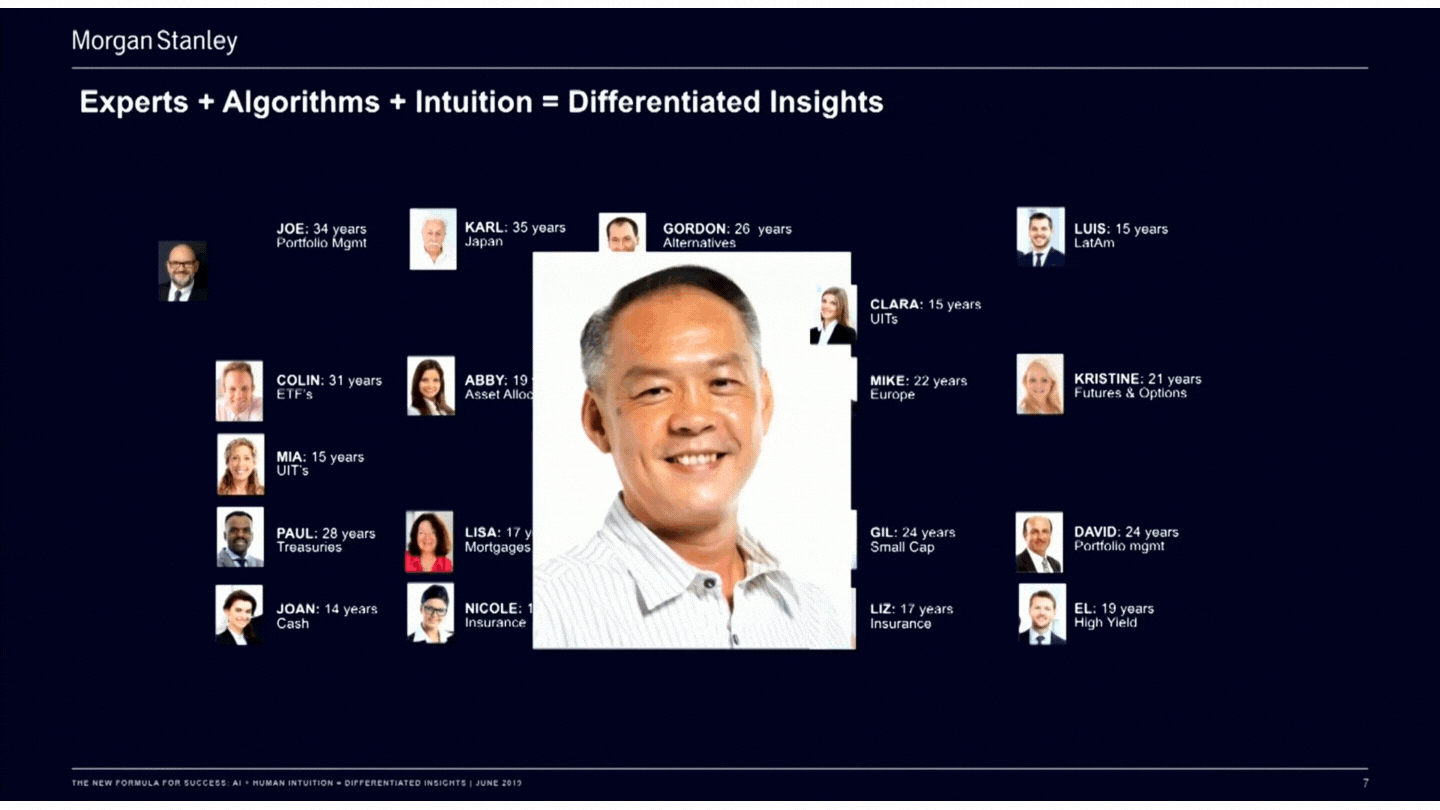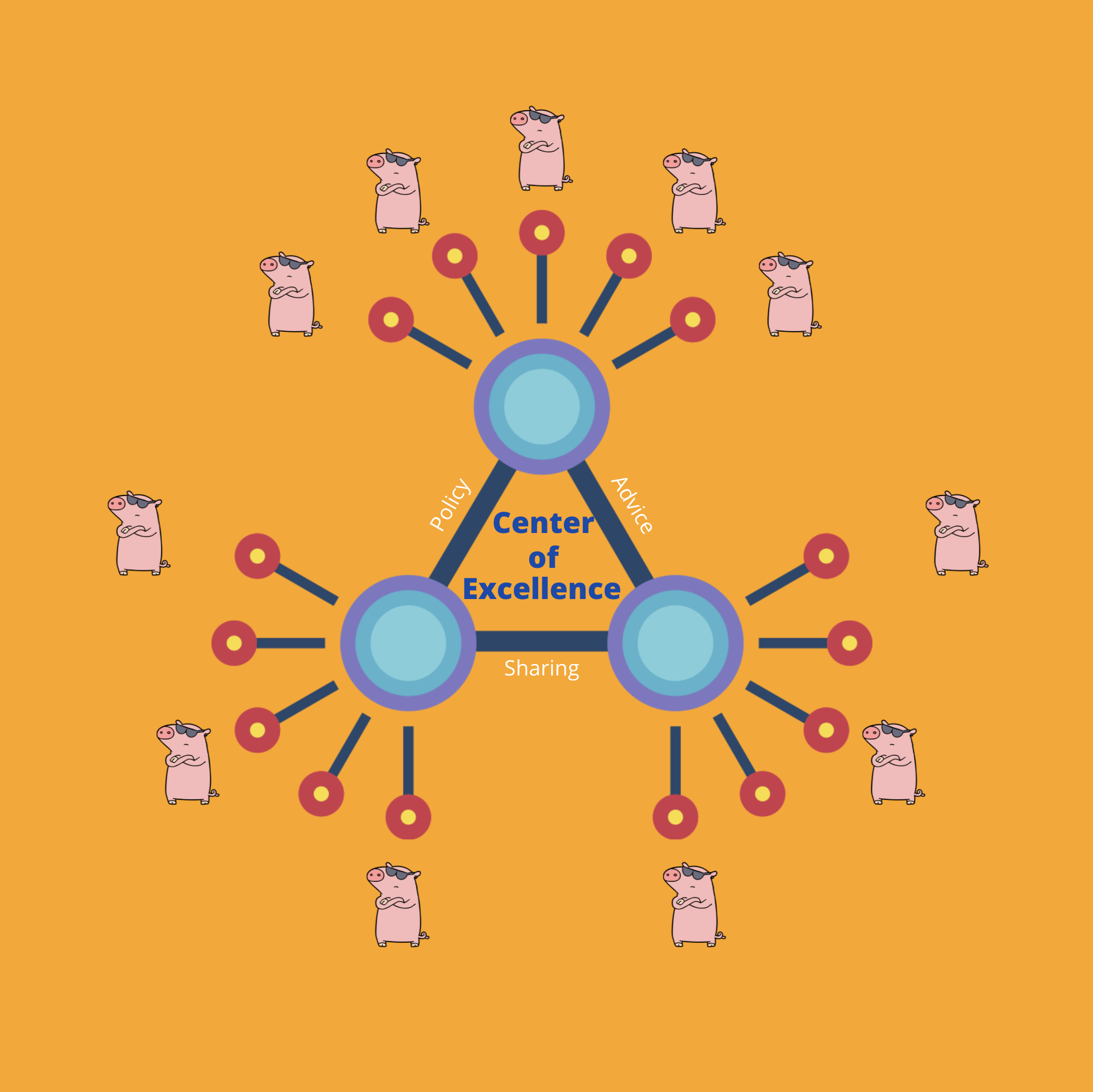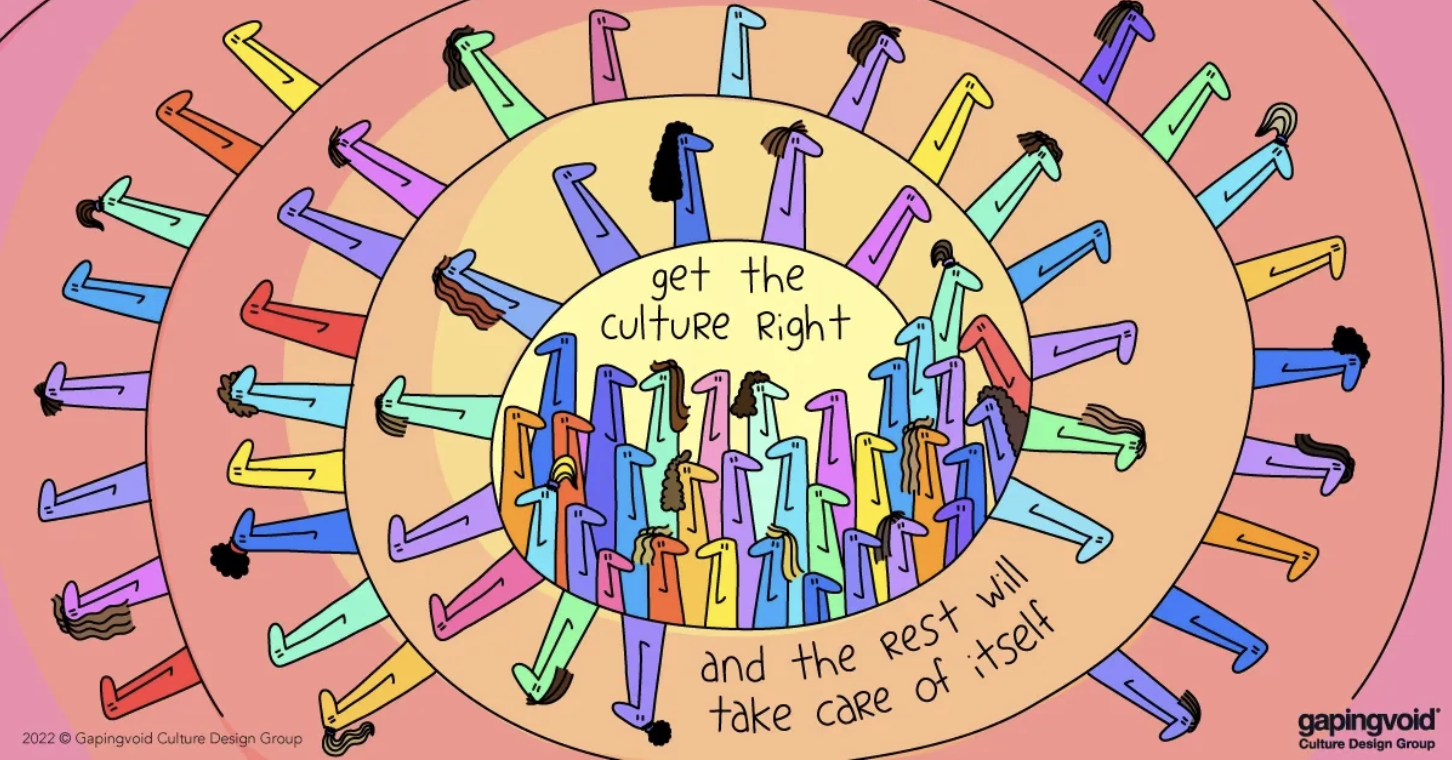Decentralized Centers of Excellence
I used to develop trading software at Fidelity. I sat next to the traders, literally. One day a shiny leather dress shoe smashed into the wall next to me—Rob, our head trader, was frustrated with the app I had developed. Despite the possible HR infraction, he got my attention. We talked. I fixed it. We moved on.
I was like the pig in the fabled ham-and-egg breakfast story: when making breakfast, the chicken is casually involved, providing eggs; the pig, by contrast, is committed. By sitting next to the traders, I was committed.
Data science "centers of excellence" (COE) should be more committed, like the pig, and decentralized. 90% are like the chicken—involved—studies show that 90% are centralized (1). That means they consult, set standards, and develop best practices. But by staying at arms-length, you are involved, but not committed.
Jeff McMillan from Morgan Stanley leads the best COE I've seen. It's 80% decentralized and 20% centralized. Jeff explains that he feels the best outcomes come from solving problems side-by-side with business users. 20% of his team’s effort is spent on policy: selecting common data science tools, training, and best practices. I think his 80/20 balance is right.
If your COE is centralized, consider flipping it on its head. Push your team out of the ivory tower to the front lines. Be pig-like. Commit. And duck if you see a shoe coming your way.

Jeff McMillian, Morgan Stanley
To comment on this post, visit this shortened version on LinkedIn.
***
FOOTNOTES
(1) Business Process Centers of Excellence Survey Paul Harmon & Celia Wolf, 2012. BP Trends.com. This is an older an older survey on centers of excellence (COE) for business process management technology that found that 90% of COEs are centralized. It’s old, but quantifies not only how many COE’s there are, but how they are structured.

Mark Palmer, Techno-Sapien.com




























